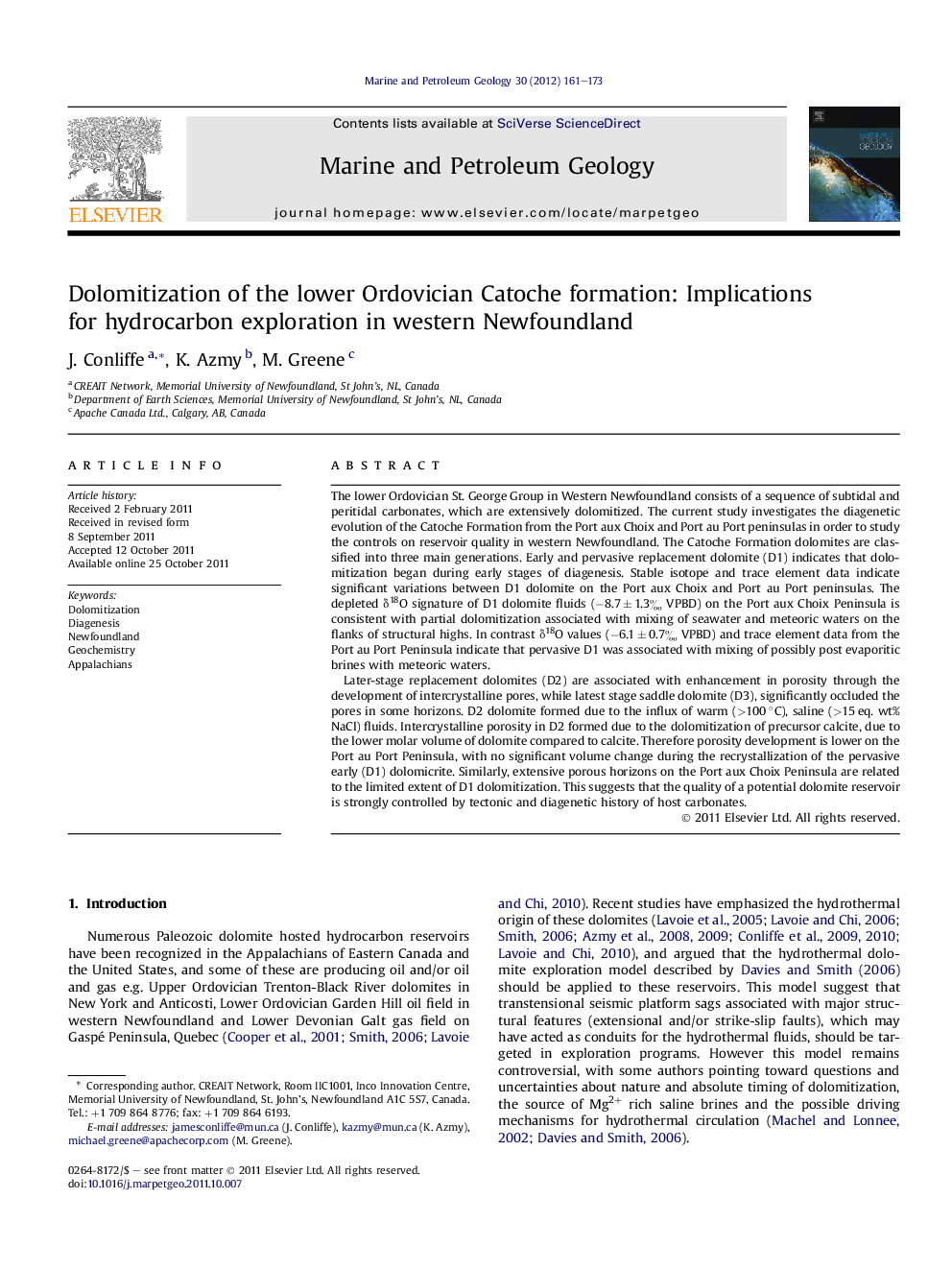| کد مقاله | کد نشریه | سال انتشار | مقاله انگلیسی | نسخه تمام متن |
|---|---|---|---|---|
| 4696040 | 1637185 | 2012 | 13 صفحه PDF | دانلود رایگان |

The lower Ordovician St. George Group in Western Newfoundland consists of a sequence of subtidal and peritidal carbonates, which are extensively dolomitized. The current study investigates the diagenetic evolution of the Catoche Formation from the Port aux Choix and Port au Port peninsulas in order to study the controls on reservoir quality in western Newfoundland. The Catoche Formation dolomites are classified into three main generations. Early and pervasive replacement dolomite (D1) indicates that dolomitization began during early stages of diagenesis. Stable isotope and trace element data indicate significant variations between D1 dolomite on the Port aux Choix and Port au Port peninsulas. The depleted δ18O signature of D1 dolomite fluids (−8.7 ± 1.3‰ VPBD) on the Port aux Choix Peninsula is consistent with partial dolomitization associated with mixing of seawater and meteoric waters on the flanks of structural highs. In contrast δ18O values (−6.1 ± 0.7‰ VPBD) and trace element data from the Port au Port Peninsula indicate that pervasive D1 was associated with mixing of possibly post evaporitic brines with meteoric waters.Later-stage replacement dolomites (D2) are associated with enhancement in porosity through the development of intercrystalline pores, while latest stage saddle dolomite (D3), significantly occluded the pores in some horizons. D2 dolomite formed due to the influx of warm (>100 °C), saline (>15 eq. wt% NaCl) fluids. Intercrystalline porosity in D2 formed due to the dolomitization of precursor calcite, due to the lower molar volume of dolomite compared to calcite. Therefore porosity development is lower on the Port au Port Peninsula, with no significant volume change during the recrystallization of the pervasive early (D1) dolomicrite. Similarly, extensive porous horizons on the Port aux Choix Peninsula are related to the limited extent of D1 dolomitization. This suggests that the quality of a potential dolomite reservoir is strongly controlled by tectonic and diagenetic history of host carbonates.
► Early dolomitization (D1) due to mixing of meteoric water and brines or seawater.
► Distribution of D1 controlled by structural history during diagenesis.
► Both hydrothermal and geothermal dolomitization during burial.
► Intercrystalline porosity highest in areas where D1 was relatively minor.
► Future hydrocarbon exploration in eastern Canada should focus on structural highs.
Journal: Marine and Petroleum Geology - Volume 30, Issue 1, February 2012, Pages 161–173